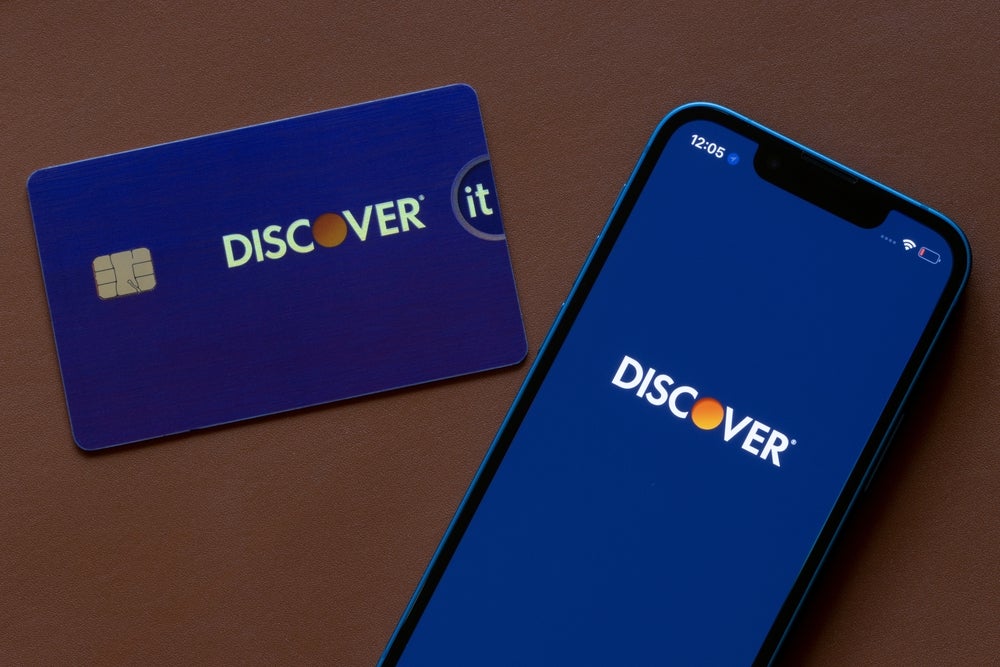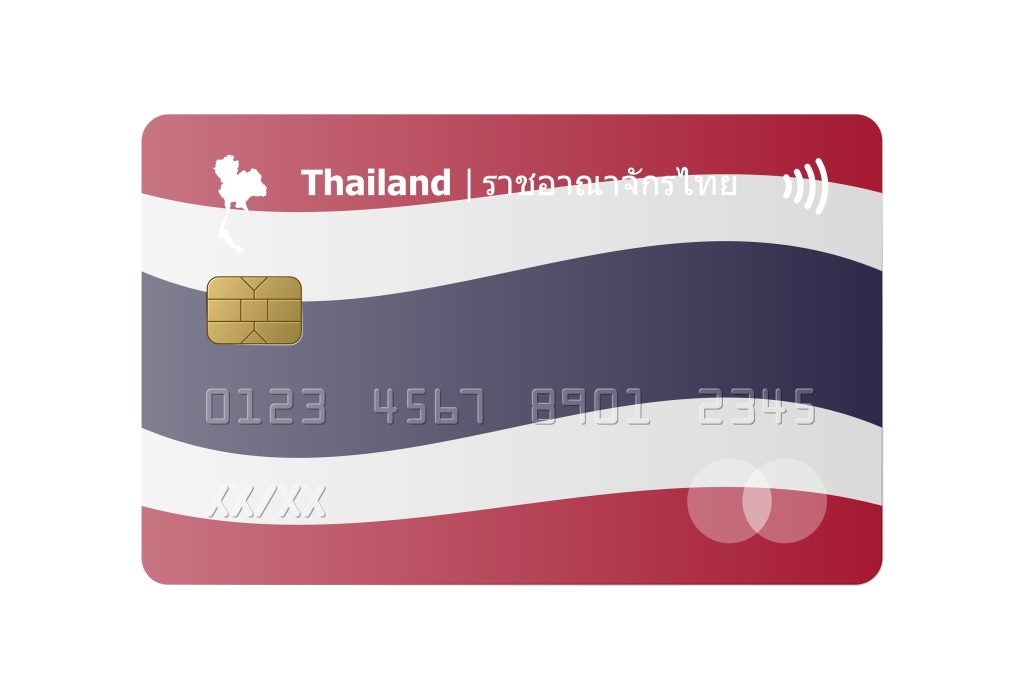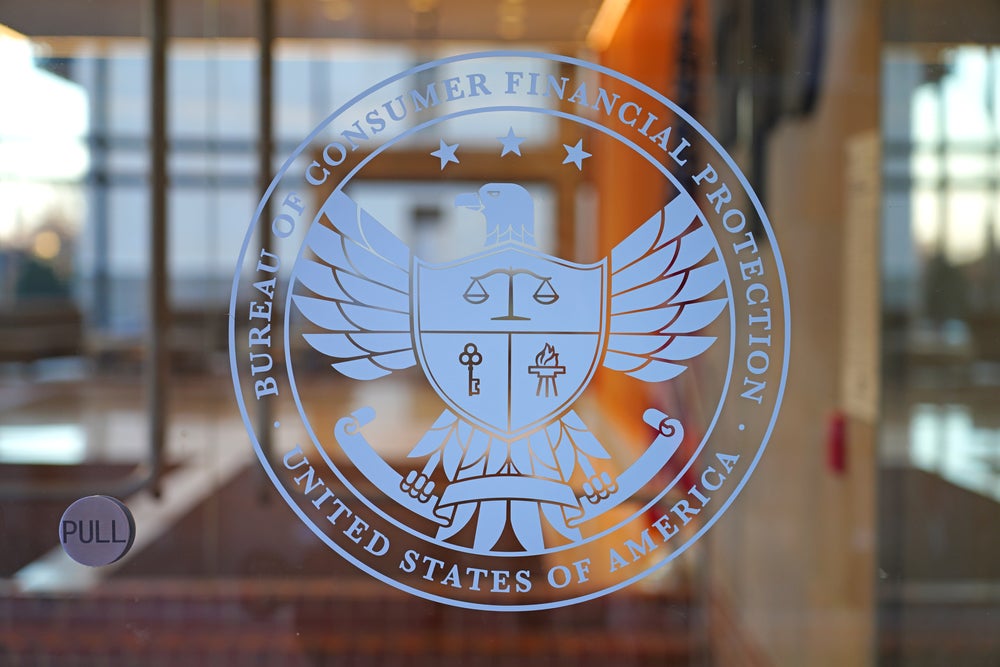reduce the high level of cash use in the economy and to develop
electronic payments. It has also implemented policies aimed at
cooling the credit card sector, in a bid to avoid the problems that
hit other regional cards markets. Sarah Williams
reports.
The credit card market in Thailand has faced a number of challenges
in recent years – large numbers of competing issuers chasing
customers, relatively low spending levels caused by slower levels
of economic growth, and a series of government regulations aimed at
making sure the credit card industry does not overheat.
According to figures quoted by the Bank of Thailand (BOT), the
central bank, Thailand’s use of cash currently stands at 11.3
percent of GDP, compared to 6.4 percent in Malaysia, 5.5 percent in
Indonesia, 8.4 percent in Singapore, 16.3 percent in Japan and 3.2
percent in Korea. ATM cards (which cannot be used at POS for debit)
are in widespread use – there were 30.8 million in issue as of
end-2006. By contrast, cheque use is relatively low, standing at
1.4 cheques per person, compared with 6.9 in Malaysia, 0.3 in
Indonesia, 20.5 in Singapore, 1.2 in Japan and 26.7 in Korea.
Despite efforts to keep credit card lending in check, the Thai
authorities are nonetheless keen to promote new forms of payments
such as cards and electronic transfers. In August 2007, BOT
governor Tarisa Watanagase said the central bank’s payment system
framework over the next four years was aimed at reducing the use of
cash and cheques in the country. The governor went on to stress
that the priority of the central bank’s 2010 payment system
framework was to promote electronic transfers.

Debit cards
How well do you really know your competitors?
Access the most comprehensive Company Profiles on the market, powered by GlobalData. Save hours of research. Gain competitive edge.

Thank you!
Your download email will arrive shortly
Not ready to buy yet? Download a free sample
We are confident about the unique quality of our Company Profiles. However, we want you to make the most beneficial decision for your business, so we offer a free sample that you can download by submitting the below form
By GlobalDataThe use of debit cards is fairly prevalent in Thailand, with almost
14 million cards in issuance by the end of 2006. (See Figure 1.)
However, some industry observers have pointed out that to some
extent debit card purchases are being squeezed. For example,
Charumporn Chotikasatien, a vice-president at Siam Commercial Bank,
was recently quoted in the Bangkok Post newspaper as pointing out
that local consumers generally prefer to use credit cards for
high-value purchases and cash for low-value items.
In an interview in February 2006, Somboon Krobtheeranont, manager
of Visa International (Thailand), said that most Thais still used
debit cards in the same way as ATM cards – to withdraw cash.
Credit cards
As of July 2007, there were 11.3 million credit card accounts in
Thailand. According to research by Asia-Pacific specialist
brokerage and investment house CLSA, there is an average 2.1 credit
cards per cardholder. Seven percent of the population holds more
than four credit cards. Due to the size of the tourism industry in
the country, approximately 15 percent of transactions are made with
non-domestically issued cards. In terms of use patterns, revolve
rates are quite high at between 60 and 80 percent for most issuers.
(See Figures 2 and 3.)


Visa is the dominant card association in Thailand. The first
Visa-branded credit card was issued in 1979 by Thai Farmers Bank.
In 2006, total card sales volume reached $41.5 billion, an increase
of 32 percent on 2005. Retail sales volume increased by 23 percent
year-on-year to reach $9.6 billion. By the end of 2006, there were
20.6 million Visa cards in Thailand, up 20.1 percent on the
previous year. Of these, 13.9 million were debit cards and 6.7
million were Visa credit cards. These figures represented growth of
21 percent and 17.3 percent, respectively, on 2005 numbers. (See
Figure 4.)

Like many other credit card markets, in Thailand there is an almost
constant stream of new products being introduced. Some recent
examples include:
• in July 2007, Malaysia-based regional low-cost carrier AirAsia
announced it was planning to launch a Citibank co-branded credit
card for the Thai market, following an earlier roll-out in
Malaysia. The airline already has a co-branded card in Thailand
with Singapore’s DBS Bank; and
• in June 2007, Citibank Thailand launched a Citibank guarantee
scheme offering refunds, gift vouchers or reward points if loan
customers receive unsatisfactory service. The bank is also
guaranteeing a temporary extra credit line within seven minutes if
a customer is not able to get a loan due to technical problems.
Queries will be responded to within three business days. The
programme is a way to increase the bank’s focus on service.
Marketing campaigns have recently been geared more towards
encouraging card use than acquiring cardholders, which had
previously been the focus. Credit card issuers have used a number
of different strategies to encourage card use. These have included
Bangkok Bank offered one condominium unit each month from December
2006 to March 2007 to boost cardholder spending in the first
quarter with its Perfect Life with Bangkok Bank campaign. Other
rewards include gold bars and chains, Toyota and Nissan cars, and
restaurant discounts. Krungthai Card has offered double reward
points for spending on its card in Hong Kong, Singapore, Malaysia
and Indonesia, as well as life insurance policies to its premium
cardholders. The highest spenders on Citibank’s platinum card each
month receive a night’s stay in a premium local hotel.
Government regulation
Beginning in 2002, the Thai authorities (usually through the BOT)
launched a package of measures to cool the credit card business.
These initiatives were taken in a bid to avoid the problems that
hit card industries in other Asia-Pacific markets such as Taiwan
and South Korea. They have been effective in that the growth rate
of credit cards in issue slowed from a peak of 120 percent in 2002
to 13.5 percent as at July 2007. (See Figure 2.)
Examples of some of the regulations and actions which have been
undertaken include:
• caps on the interest rate that could be charged to cardholders
were introduced. Effective December 2006, these were relaxed
somewhat, as the cap was raised from 18 percent to 20 percent for
new transactions. The new cap applies to existing balances as of
July 2007;
• from April 2007, existing debtors have been required to repay
their balances at a minimum of 10 percent of the outstanding sum,
up from the previous 5 percent, in order to encourage borrowers to
pay off debts;
• in July 2007, the BOT formally rejected calls from card issuers
to reduce the minimum payment requirements;
• according to regulations introduced in 2007, people with who have
more than BHT500,000 ($15,747) in their deposit accounts or own
debentures issued by banks and state enterprises worth more than
BHT1 million are eligible to apply for a credit card. The credit
line for this group is 10 percent of total savings;
• only Thais whose salaries are higher than BHT15,000 a month can
apply for a credit card;
• no gifts may be given upon application (gifts may be given only
upon approval);
• no cards may be pre-approved;
• issuers must have proof that late payment charges are directly
related to cost; and
• marketers may promote card products to potential customers only
between the hours of 8am to 8pm on weekdays and 8am to 6pm on
weekends and public holidays.
Further evidence that authorities are determined to keep a close
eye on the credit card issuer emerged in June when it was announced
that the Thai police were considering legal action against local
credit card issuer Krungsriayudhya Card over its recent credit card
use promotion programme. Under Thai regulations the promotion could
be construed as gambling, and the issuer may be in violation of the
local gambling law as it has not obtained a gambling licence.
The latest example of Thai authorities regulating the cards
industry came in September 2007 when the BOT issued new guidelines
on debt collection in order to promote consumer protection. The
three main guidelines cover contacting debtors, hiring debt
collecting companies and setting up procedures to deal with
customer complaints. However, the BOT was quick to emphasise that
the new practices do not encourage debtors to avoid creditors or
drop their payments.
Despite these measures, there are indications that the number of
non-performing loans (NPLs) may be on the rise. For example, in
August 2007, the chairman of Thailand’s Credit Card Club (an
industry association) said that card issuers will have faced more
NPLs in the first half of 2007 due to weakening economic
conditions. Bangkok Bank’s bad loans, for example, rose to 1.5
percent of total credit card receivables in the first half of 2007,
compared with 1.25 percent at the end of 2006. The number of NPLs
at Siam Commercial Bank also increased in the second quarter of
2007, due to credit cards defaults. One industry insider recently
told CI that delinquencies are running at a rate of around 5 to 7
percent in the country.
The government is taking other steps to develop the credit market.
For example, the National Credit Bureau is proposing a revision of
credit scoring and reporting laws. Currently the bureau can collect
credit information about individuals and sell it only to
institutions and individual customers. The proposal allows the
bureau to provide credit information to individuals free of charge
once a year. Some 4,000 borrowers have checked their credit reports
filed with the bureau so far, and 250,000 borrowers have legally
registered 3 million credit accounts with the bureau.
Contactless and prepaid
In January 2007, Visa released the results of consumer research it
had commissioned into contactless payments in Thailand, ahead of
the anticipated roll-out of a contactless payment product in
Bangkok later in the year. According to Visa Asia-Pacific’s
regional head of contactless, Peter Manners, Thailand is one of
Visa’s “priority markets” in the region for introducing Visa
contactless.
The study found that one in five Thai consumers was familiar with
contactless payment cards. Only one in ten had actually used a
contactless payment card, mainly at convenience stores. Nearly
two-thirds of those surveyed expressed an interest in acquiring a
Visa contactless payment card. Some 93 percent indicated that they
liked the zero liability protection feature, while 84 percent of
respondents indicated that they were attracted by the capacity to
track their transactions.
In the prepaid card market, the Thai Smart Card Company (TSC) is a
joint venture set up by the Thailand’s largest convenient store
chain, CP Seven Eleven, telecommunications operator True and a
number of leading banks including Krung Thai Bank, Bank of Ayudhya,
Government Saving Bank, Siam City Bank and Krungthai Card. The
start-up investment cost was around BHT15 million.
Beginning in 2006, smart cards with contactless technology, called
smart purses, were issued to customers at CP Seven Eleven stores
throughout Thailand. About 8,000 smart purse terminals have been
installed in all but 600 of the country’s 3,924 CP Seven Eleven
convenience stores and in 2,500 other businesses. In 2006, the
company distributed about 1.1 million smart purse cards. Under its
business plan, by the end of 2007 there will be 2.1 million cards
in use and by 2010 at least 5 million cards and 30,000 reader
terminals. TSC’s revenue comes from a 1 to 2 percent surcharge paid
by retailers for transactions.
Competitive environment
The largest players in the Thai credit cards market are Krungthai
Card (also known as KTC), Siam Commercial Cards and GE Money
(through its three joint ventures). The largest bank issuers in the
market are Bangkok Bank, Siam Commercial and Kasikorn Bank.
Major foreign banks involved in the Thai credit cards market
include Citi, HSBC and Standard Chartered. The market is
concentrated at the top level; an industry insider told CI that the
combined market share of the top three players (GE Money, Krungthai
Card and Siam Commercial) accounts for over 50 percent of the
total.
Given that there are 24 issuers in the market and a little over 11
million credit cards in circulation, some observers have expressed
the view that the Thai market is saturated.
Despite this, several new players have entered the market. In 2007,
for example, Thanachart Bank was formed from a finance company in
Thailand. It intends to launch a credit card business in 2008 and
aims to acquire 100,000 customers in the first year. Credit cards
will be the platform the bank uses to cross-sell into other
business such as personal loans. Its Canadian partner, Scotiabank,
is expected to transfer its expertise in the credit card
business.
Non-bank credit card issuers include Tesco Card Services and
General Card Services (both joint ventures of GE), Cetelem and
Capital OK.
MAJOR PLAYERS
Citibank
Citigroup established a presence in Thailand in 1969 through a
corporate banking business and in 1984 acquired Mercantile Bank in
order to gain a full banking licence at a time when ceilings on
foreign banks applied. In July 2007 Citibank, Visa International
and Thai retail giant The Mall Group announced the launch of the
Citi M Visa credit card. Targeting more than 500,000 consumers, the
Citi M Visa is billed as the “ultimate credit card for avid
shoppers in Thailand”.
Citi M Visa credit cardholders receive a wide range of special
offers and discounts when they shop at Mall Group department stores
nationwide, including the Siam Paragon and Emporium department
stores in Bangkok.
GE Money
GE’s presence in Thailand comes through three main joint ventures:
Tesco Card Services, General Card Services (through which cards are
offered to customers of a number of shops, notably the Central and
Robinsons department stores) and Krungriayudhya Card Company. As of
mid-2006, Krungsriayudhya had 700,000 credit card customers.
GE Money further enhanced its position in Thailand when it acquired
a significant stake in Bank of Ayudhya, the sixth-largest bank in
Thailand in terms of assets and loans, with 500 branches, 4 million
deposit accounts and 50,000 commercial accounts.
GE Money claims to have pioneered consumer finance services in
Thailand and has been operating in the market for over ten years.
GE Money Thailand offers a wide range of consumer finance products
to over 3 million customers including the Krungsri Visa and
Krungsri MasterCard, Central MasterCard, Home ProVisa and Tesco
Lotus Visa credit cards. It is estimated that GE Money’s three
credit card joint ventures have over 2 million credit cards in
circulation.
Kasikorn Bank
Kasikorn Bank (also known as KBank and formerly known as Thai
Farmers Bank) has been listed on the Stock Exchange of Thailand
since 1976 and is the fourth-largest commercial bank in the country
as measured by total assets. It had total assets of BHT936.7
billion as of the end of 2006.
At end-December 2006, the bank operated 568 branches and had an
nationwide network of 2,550 ATMs. Kasikorn prides itself on its
innovation and claims to have started the first financial company
in Thailand and to have been “the first to issue a national brand
credit card”. Kasikorn plans to target market campaigns at
cardholders who are frequent travellers in a bid to make its
offering stand out.
Krungthai Card
Krungthai Card (KTC) claims to be Thailand’s largest single credit
card issuer. In February 2007 its managing director, Niwatt
Chitalam, told news agency Reuters that its 2007 net profit will
improve from 2006 levels given lower operating costs and growing
personal lending levels, even though the economic and political
uncertainty in Thailand is widely expected to affect consumer
spending.
Chitalam went on to say that lower new card numbers in 2007 would
mean lower costs of servicing and marketing, which will help the
company save many millions of baht. KTC’s total customer base of
both credit cardholders and personal loan customers totalled 1.9
million as of mid-2007.
As of the end of 2006, Krungthai Card’s net credit card receivables
amounted to BHT27.42 billion.
Siam Commercial
Siam Commercial Bank claims to be the number one commercial bank in
Thailand in terms of both card numbers and cardholder spending. The
bank recently launched a Titanium Golf Card to serve a growing
premium market segment.
SCB is estimated to have more than 1 million credit card
customers.







